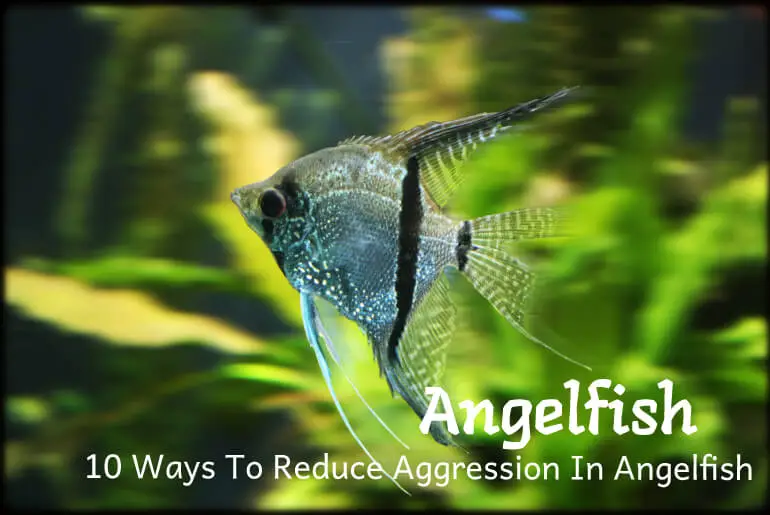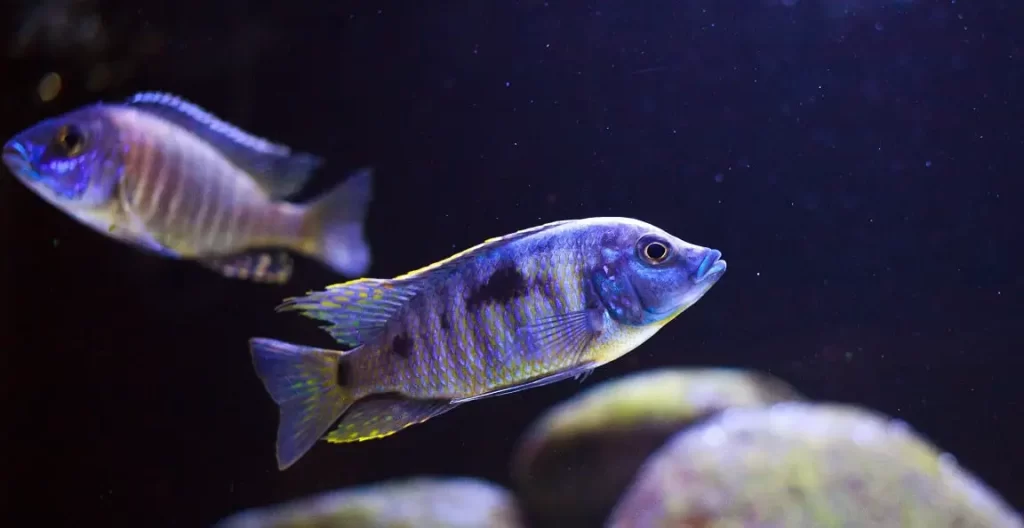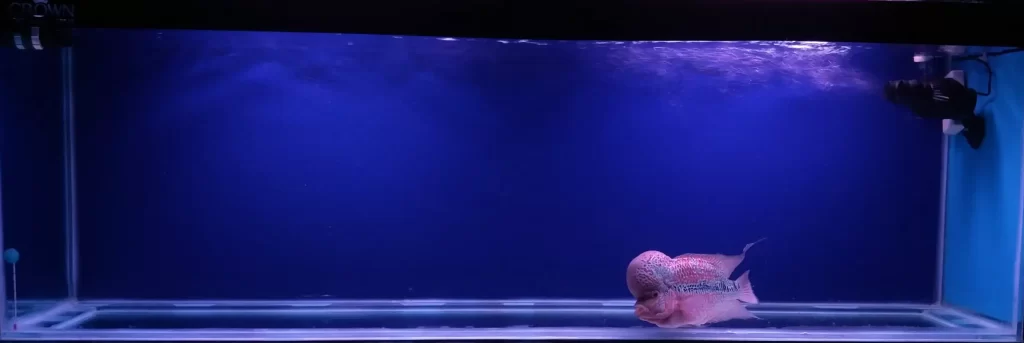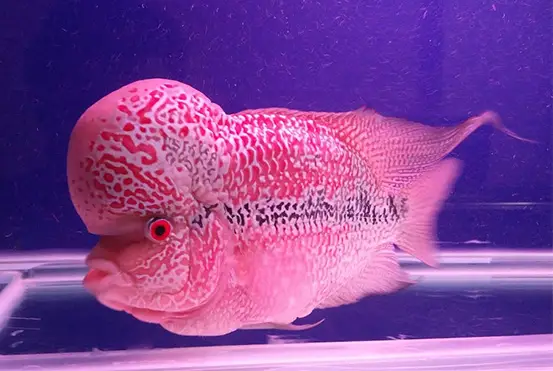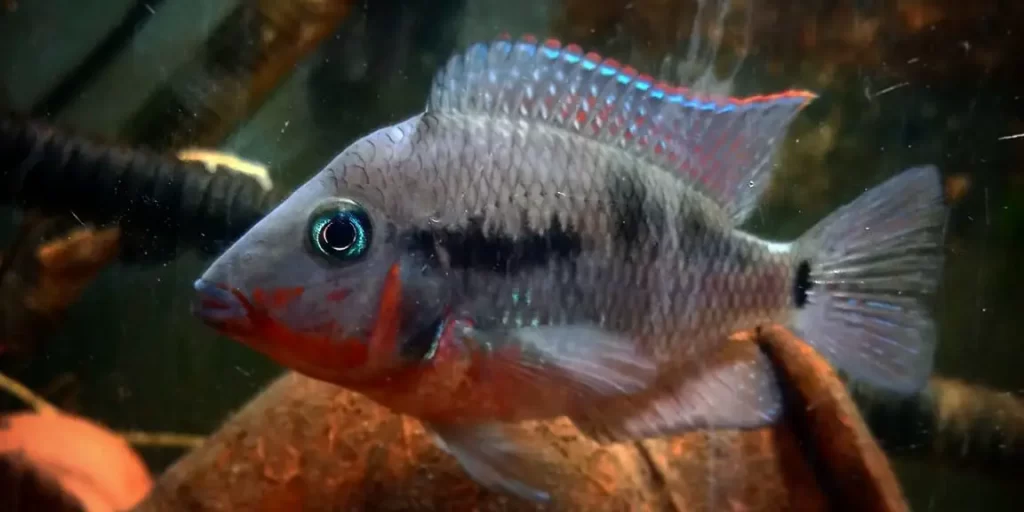Angelfish are one of the simple and elegant fish that you will find. Their body stripes and fins make them look like a piece of art. Their beauty definitely overshadows their aggressive behavior. But, aggressive behavior in Angelfish can be frustrating and worrisome. So, what can you do to reduce aggression in Angelfish?
There are many ways to reduce aggression in Angelfish, such as increasing tank size, balancing the number of males and females, keeping dinner fishes, and maintaining ideal tank parameters. In addition to this, ensuring adequate hiding space for your fish and feeding them enough food also reduce aggression in Angelfish.
If you have an aggressive Angelfish, don’t worry. You’re not alone. Many people find themselves in the same situation. In this blog post, we will talk about the causes of aggression and some tips to help calm your fish down.
Are Angelfish Usually Aggressive?
Angelfish are one of the most popular fish in the aquarium trade. Owing to their beautiful body shape and fins, they are often kept as decorations in people’s homes. However, what many people do not know is that caring for angelfish might be problematic due to their aggression.
Angelfish come from the cichlid family, which is known for its aggressive fish. But this does not necessarily mean that Angelfish are always aggressive. Usually, aggression in angels can be caused by a variety of factors, including poor water quality, overstocking, and lack of hiding places. If you notice your angelfish chasing other fish or nipping at their fins, it’s important to take action to reduce the aggression.
As you read further, you will definitely find some tips to help you with this. But fish, we will deal with the causes of aggression in Angelfish.
What Are The Causes Of Aggression In Angelfish?
While most fishkeepers suspect that Angelfish shows aggression without any real reason. However, my personal experience says that these fish become aggressive when they are not comfortable in their tank. The main reasons behind this aggression are:
Small Space
Angelfish are known to be aggressive when they don’t have enough space in the tank. This is because these fish are territorial and need a lot of space to themselves. In addition to this, these fish needs a lot of hiding space to feel safe and secure. When you keep them in a small space of fewer than 20 gallons, they become stressed out and this stress manifests itself in the form of aggression.
Lack Of Enough Food
Another common reason behind aggression in Angelfish is the lack of food. These fish are greedy, and if they don’t get enough food, they become stressed out. Especially, inadequate nutrition might lead to various diseases in Angelfish which in turn make them aggressive.
So, these were some of the common reasons behind aggression in Angelfish. Now let’s take a look at some of the ways to reduce this aggression.
Competition In Mating
Male Angelfish are usually very aggressive when it comes to mating. This is because they have to compete with other males to mate with the female. In such a situation, you can either remove the aggressive fish from the tank, or you can provide them with more hiding spaces.
Improper Tank Parameters
Although Angelfish are hardy fish, they might be quite sensitive to tank parameters. This means that the water quality, temperature, lighting, and other factors are not up to the mark. Generally, frequent changes in water conditions will stress your Angelfish. As a result, this might lead to various diseases in Angelfish and makes them aggressive.
However, you can easily manage these problems and reduce the aggression of your Angelfish. But sometimes, novice Angelfish owners might miss the signs of aggression in their fish. Can you identify aggressive fish? If you can’t, then you will soon know it.
How To Identify Aggression In Angelfish?
When you are new to fishkeeping, it is obvious to fish a few things. And the signs of aggression in angelfish come to the top of that list. So, if you are a newbie and want to know about aggression in angelfish, this guide is for you.
The most obvious signs of aggression are biting, chasing, and nipping. If you see your angelfish performing any of these activities, then it is a sign that your fish is aggressive.
Apart from that, you can also identify aggression in angelfish by their body language. If you see your fish flaring their fins or shaking their bodies, then it is a sign that they are feeling aggressive.
In addition to that, you will also see aggression in angelfish if they start to change their color. Angelfish are known to be very colorful creatures. So, if you see your fish changing its color to a darker shade, then it is a sign of aggression.
Now that you know how to identify aggression in angelfish, let’s take a look at some of the ways to reduce aggression in these fish.
10 Ways To Reduce Aggression In Angelfish
Aggressive fish can be a big problem in the home aquarium. Not only will they terrorize their tank mates, but they can also make it difficult to keep other fish alive. If you have an aggressive angelfish, there are some things you can do to reduce its aggression.
Understand Their Nature
Some Angelfish are naturally aggressive. You can do nothing about it. But if a single fish is causing problems in your tank, it is likely because it was not properly socialized when it was young.
Angelfish that are kept in groups often have their aggression spread out among the group, and they are less likely to be aggressive toward other tank mates. So, it is best to remove the culprit from the tank and re-home it. This will reduce the chances of aggression in other Angelfish.
Use Ideal Tank Size
Angelfish are quite big and are around six inches in size. Moreover, these fish are shoaling fish that prefer to live in groups. Keeping Angelfish alone might make them lonely and increase stress. So, an ideal tank size for a group of Angelfish is at least 55 gallons.
A larger tank will provide more space for the fish to swim and explore. It will also give them more room to establish their territory. Both of these things can help reduce aggression in Angelfish.
Provide Hiding Places
Angelfish feel safer when they have places to hide. So, it is important to provide them with plenty of hiding places in their tank. This could be in the form of plants, rocks, or even caves.
Angelfish that feel safe and secure are less likely to be aggressive. Providing hiding places will also help reduce aggression among Angelfish that are kept in groups.
Give Them Adequate Food
Angelfish that are well-fed are less likely to be aggressive. So, it is important to give them a high-quality diet that is rich in nutrients. You should also feed them small meals several times a day instead of one large meal.
This will help reduce aggression and make sure they are getting the nutrition they need. Adequate and nutritious food might also help you keep your Angelfish happy and healthy, giving them a longer life.
Change Water Less Frequently
Angelfish are very sensitive to changes in their environment. So, it is important to change the water in their tank less frequently. Angelfish needs some time to adjust to new water conditions.
So, changing the water too often can be stressful for them and increase aggression. It is best to change the water in their tank every two weeks or so. Even while you change the water, you need to do it gradually.
Balance The Number Of Males And Females
Angelfish often become aggressive in mating season. This is when the males will start to chase the females around and nip at their fins. One way to reduce this aggression is to make sure there are more females than males in your tank. A ratio of two females for every male is often ideal.
You can also remove the aggressive males from the tank during mating season and put them in a separate tank. This will allow the females to mate without being harassed.
Keep Dinner Fish
Keeping dinner fish in a tank is the best way to control the aggression of Angelfish. When there are other small fish in the tank, the attention of your fish will be focused on them.
The dinner fish will also provide a good source of food for your Angelfish. So, it is a win-win situation for both you and your fish. Just make sure the small dinner fish are in groups so they can school together and stay safe from the Angelfish.
Remove Breeding Pairs
If you want to reduce aggression in Angelfish, it is best to remove breeding pairs from the tank. This is because they will often become aggressive toward each other and other fish in the tank. Besides this, Angelfish often show aggression when they are pregnant. So, it is best to remove them from the tank until they have given birth. This will reduce aggression and even keep the fry safe.
Choose Appropriate Tankmates
Another way to reduce aggression in Angelfish is to choose appropriate tankmates. Angelfish are often aggressive toward fish that are similar in size and shape. So, it is best to avoid keeping fish like this in the same tank.
Instead, you should choose fish that are different in size and shape. This will help reduce aggression among your fish. Fish like Corydoras, Platies, Mollies, Gouramis, and Tetras are often good choices for their tankmates.
Maintain Ideal Tank Parameters
Last but not least, you should maintain ideal tank parameters to reduce aggression in Angelfish. This means keeping the temperature between 75 and 82 degrees Fahrenheit and the pH between six and eight. Maintaining these parameters will help keep your fish healthy and reduce stress.
Stressed fish are often more aggressive than healthy fish. So, by maintaining ideal tank parameters, you can help reduce aggression in Angelfish.
You can use the following heaters for your angelfish tank:
- HITOP PTC Adjustable Aquarium Heater, Sturdy Fish Tank Heater with Protective Cover, 100W/200W/300W/400W Heater for Fresh/Saltwater Fish/Turtle Tank up to 120 Gallon
- hygger Variable Frequency Aquarium Heater, 500W Quartz Fish Tank Heater with LED Digital Display Thermostat Controller for 50-100 Gallon Freshwater Saltwater Tank
- Eheim 3619090 Jager Aquarium Thermostat Heater 300W, Black
Are your Angelfish aggressive? If yes, then what do you do to reduce aggression in Angelfish? Let us know in the comments below.
FAQs
Are Angelfish Aggressive Towards Other Angelfish?
Yes, angelfish can be aggressive towards other fish, including other angelfish. This is usually due to territoriality and competition for food or mates. Angelfish aggression can range from mild nipping to outright attacks that result in serious injuries or even death.
How Many Males And Females Angelfish Can You Keep In A Tank?
The recommended ratio is one male to two or three females. However, if you have a large tank, you may be able to keep Angelfish in groups. But keeping more males together often leads to aggression and fighting.
Can Angelfish Eat Other Angelfish?
No, angelfish should not eat other fish. This includes other angelfish. Angelfish are predators and may attack and eat smaller fish, but they are not designed to digest other fish properly. This can cause health problems for your angelfish.
What Size Tank Do Angelfish Need?
Angelfish need at least a 20-gallon tank. A 30-gallon tank is even better. Angelfish are large fish, and they need plenty of room to swim and explore.
Can Angelfish Bite Humans?
Angelfish can bite humans, but it is rare. Angelfish bites are usually not serious and only cause minor puncture wounds. However, if you have an open wound or a cut, you should be careful around angelfish as their teeth can introduce bacteria into your body.
Conclusion
If you have an aggressive angelfish, there are some things you can do to try to reduce the aggression. You can try different tank mates, rearrange the aquarium, and provide hiding places. If the aggression is severe, you may need to remove the fish from the tank. With a little patience and effort, you can usually reduce aggression in angelfish and have a peaceful aquarium.
If you have any questions about keeping angelfish, feel free to ask us in the comments below. We’re always happy to help!

